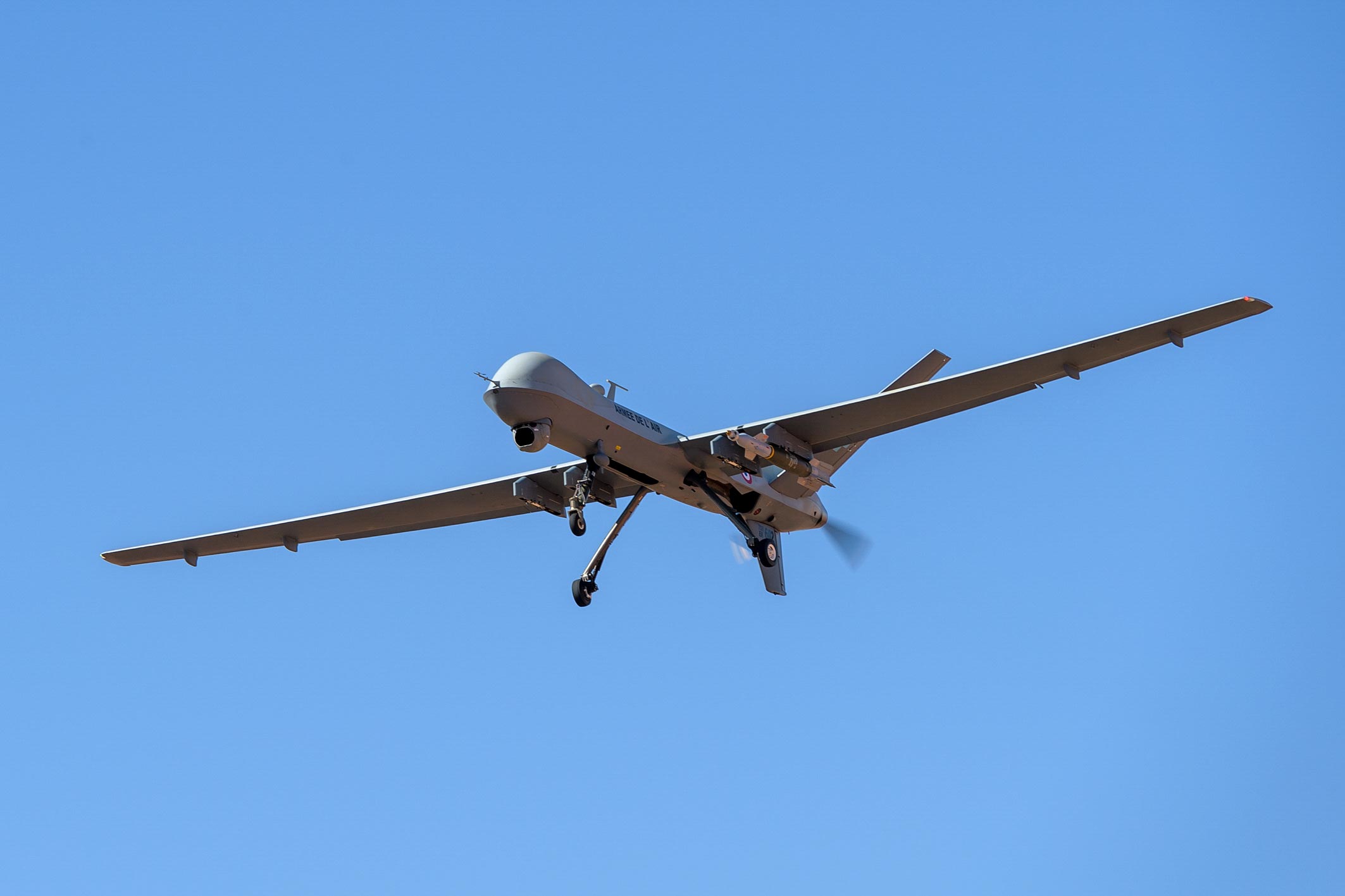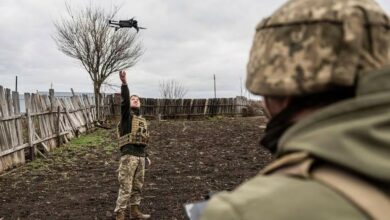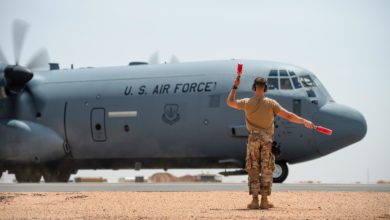French actions ‘neutralize 50 terrorists’ near Mopti in central Mali
Barkhane operations between February 9 and 17 targeted Islamic State and al-Qaeda affiliated militants
Around 50 militants were “neutralized” in actions carried out by the France-led Operation Barkhane targeting Islamic State and al-Qaeda affiliated fighters in Mali, according to an Armed Forces Ministry release.
The operations, conducted in two phases between February 9 and 17 around the central town of Mopti, were the result of “preparatory work and intelligence gathering that made it possible to characterize with certainty the activity of armed terrorist groups,” the Thursday, February 20 release said.
Around 30 motorcycles and two pickup trucks were destroyed, and weapons, telephones and electronic equipment were seized during the actions.
In the first operation, carried out northwest of Mopti between February 9 and 10, airstrikes conducted by Reaper drones and Mirage 2000 jet fighter aircraft along with combat helicopter engagements “neutralized some 20 armed combatants” including an Islamic State in the Greater Sahara officer.
The French Armed Forces groups fighters killed, injured or taken prisoner under the terms “neutralized” or taken “out of action,” according to AFP.
A second action was carried out between February 16 and 17 south of Mopti, “in a region where Katiba Macina is rampant.”
Katiba Macina is one of the constituent groups of JNIM, which has pledged allegiance to al-Qaeda.
Airstrikes and helicopter fire were accompanied by a helicopter-borne assault, and “some 30 jihadist fighters were put out of action.”
“These two operations, with their very heavy material and human toll, weaken the offensive potential of the armed terrorist groups in this region,” the ministry said.
FAMa ‘captures 3 foreign terrorist leaders’ near Mopti
On February 18, the day after the French action south of Mopti, the Malian Armed Forces (FAMa) tracked “terrorists” in the Somadougou area of the Mopti region, a FAMa release said.
“FAMa helicopters carried out precision airstrikes in the Somadougou sector as far as the village of Diallo on the Bankass road,” the release said.
Somadougou is around 28 km (17 miles) south of Mopti town, and Diallo is around 25 km further southeast.
“Several terrorists were killed, some weapons were abandoned, others destroyed,” and three “foreign terrorist leaders” were captured.
It is unclear whether the Barkhane and FAMa operations were related.

Earlier this week, the French ministry released information on two other Barkhane actions on February 8 and 13 near Hombori, which is around 280 km east of Mopti town.
Between February 6 and 7, the Barkhane force ‘neutralized’ around 20 terrorists “in the west of the Gourma region,” in an area where the “katiba is rampant.”
In mid-January, the ministry said more than 30 “terrorists” were “put out of action” in two commando operations in Mopti that apparently targeted Katiba Macina.
Growing French presence in the Sahel
The French military presence in the Sahel began in 2013 with Operation Serval in Mali, and evolved in August 2014 into Operation Barkhane, which has a mandate for counter-terrorism operations across the region. The Barkhane force focuses activity in insurgent-hit Mali, Niger and Burkina Faso, working alongside local troops and other international operations, including the regional G5 Sahel Joint Force (FCG5S), which comprises troops from Burkina Faso, Mali, Niger, Chad and Mauritania, and MINUSMA, the U.N. stabiliization mission in Mali.
Earlier this month, Armed Forces Minister Florence Parly said that the number of French troops deployed to the Sahel would increase from 4,500 to 5,100.
France and the G5 Sahel states in January injected new urgency into the counter-terrorism fight, announcing a new Coalition for the Sahel which will see increased coordination between French and local forces. Barkhane and FCG5S forces operating under joint command will focus on the Mali-Burkina Faso-Niger tri-border zone, targeting Islamic State as a priority.
Barkhane is already building command coordination with Sahel Coalition partner forces, setting up dedicated coordination mechanisms in Niger’s capital Niamey and Chad’s capital N’Djamena, where Barkhane is headquartered, while Mali has launched Operation Maliko, a new counter-terrorism operation that will take into account cross-border, regional and international cooperation.
France has also been trying to build support for the new special operations Task Force Takuba that will train, advise, assist and accompany local forces in their fight against Islamic State and al-Qaeda affiliates in the region. Takuba will declare initial military capability in the summer and will be fully operational by the autumn.
France hopes that Takuba will comprise around 500 special forces personnel, according to Le Monde. The new French deployment will include around 50 special forces personnel who will form the nucleus of Takuba, Le Monde reported.
So far, Estonia, the Czech Republic, and Sweden have announced plans to contribute to Takuba, and discussions with Finland and Norway are reportedly ongoing, but Germany and the U.S. have declined.
Belgium is to contribute three staff officers to Takuba according to the Belga news agency, but the current caretaker government’s Foreign Minister Philippe Goffin told AFP on February 13 that committing troops to such an operation would require a government with a full mandate, plus the approval of parliament.
Barkhane already has an international dimension, with European partners contributing troops and equipment. Estonia is to almost double the size of its force protection contingent this year, Denmark has deployed two Merlin helicopters, and three Chinook helicopters from the United Kingdom currently support the operation.

Islamist insurgents in the Sahel
The complex insurgency in the Sahel began in Mali in 2012, when a Tuareg separatist uprising was exploited by al-Qaeda-linked extremists who took key cities in the desert north. Former colonial power France began its Operation Serval military intervention the following year, driving the jihadists from the towns.
But the militant groups morphed into more nimble formations operating in rural areas, and the insurgency gradually spread to central and southern regions of Mali and then into Burkina Faso and Niger.
More than 4,000 people were reported killed in militant attacks in the three countries last year, according to the U.N., and Secretary-General Antonio Guterres has warned that the spiraling violence in the Sahel has spread to coastal states of West Africa.
Many armed groups including Islamic State are active in the Sahel region, but the majority of attacks are attributed to JNIM, which formed in March 2017 from a merger of several smaller groups. JNIM’s leadership has pledged allegiance to al-Qaeda leader Ayman al-Zawahiri.
Since May 2019, ISIS has attributed insurgent activities in the Sahel area to ISWAP, its West Africa Province affiliate that split from Boko Haram in 2016, rather than to Islamic State in the Greater Sahara. ISWAP’s main area of operations is the Lake Chad area of Nigeria, Niger, Chad and Cameroon.
Macron has said the Sahel Coalition would prioritize the fight against ISIS in the Mali-Burkina Faso-Niger tri-border area because it is the most dangerous.












